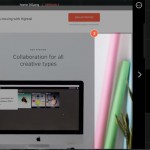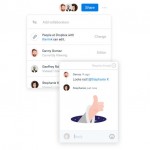How Unsexy Collaboration Apps Made Atlassian A Quiet Powerhouse
Scott Farquhar, co-CEO of hit project-management and chat software maker Atlassian, remembers lean times in New York’s East Village a decade ago. “We were two young guys, and we thought New York was a fantastic place to go open an office,” he says of himself and fellow Aussie cofounder and co-CEO Mike Cannon-Brookes. “Being poor in New York is not fun, and we were really poor. We didn’t pay ourselves much back then.”
The two were parsimonious because it was their own money. They bootstrap-funded Atlassian from its beginning in 2002, and the company has been profitable since 2005. After a smash-hit IPO that raised $462 million in December 2015, the company is currently valued at $6.15 billion. Now Atlassian is announcing its next big step: taking on companies like Zendesk and Salesforce for customer service software.
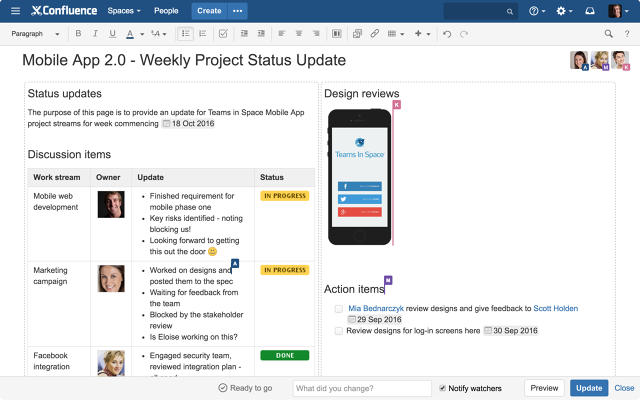
Atlassian wasn’t a glamorous startup and remains a low-key company—despite having over 60,000 customers in 160 countries and being named for the Titan who holds up the sky. Its group chat service, HipChat, has taken the role of plain stepsister to chic rival Slack. (Atlassian claims that HipChat is having “tremendous growth,” but it refuses to provide numbers to back that up.) Other products—collaboration tools mainly for software developers—are even less glamorous, but are lucrative. They include the Jira project-management software, Bitbucket code repository and version tracker, and Confluence—something like Google Drive for wikis and other company documentation.
Atlassian has become a mainstay in many, many technical teams, and Jira (from the Japanese name for Godzilla) has expanded beyond software development and IT task tracking into general project management. Users include not only tech clients like NASA, Netflix, Tesla, and Twitter, but also John Deere, Sotheby’s, the U.S. Department of Defense, and Hillary Clinton’s presidential campaign. “I think the breadth of it surprises people,” says Farquhar.

Atlassian is announcing its next step at the company’s user conference, Atlassian Summit, which hosts over 3,000 people in San Jose starting October 12. Beyond a laundry list of technical and feature-upgrade announcements, the big news is the expansion of Jira into customer service and relationship management. The Service Desk version of Jira, launched in 2013, was meant for employee helpdesks inside a company, but clients have been requesting external customer support from the beginning, says Farquhar. “Originally, we thought, why would you do that? Just use Zendesk or plenty of other things out in the market,” he says.
But clients wanted one support system connecting both the employees and customers, according to Farquhar. That now puts Atlassian up against a wide field of competitors. Besides Zendesk (another recent IPO hit, valued just under $3 billion), they include Freshdesk, Kana, and Salesforce’s Desk.com.
The Low-Key Approach
Farquhar and I are chatting about the news a week before the summit at Atlassian’s U.S. HQ in San Francisco’s South of Market neighborhood. It was a challenge to get through the masses attending Salesforce’s Dreamforce convention (where Farquhar gave a keynote address). This Lollapalooza for customer relationship management attracts about 170,000 visitors, plus celebrities like U2 are hired to entertain them. The host company is building what will be the second-tallest skyscraper west of the Mississippi.
The feeling at Atlassian is the antithesis of that grandiosity. We’re in a gutted industrial building way down on Harrison and 7th streets, next to the elevated freeway and a block from a row of bail-bond shops.
Farquhar, who has tousled curly hair and an Aussie accent, is wearing jeans and a company T-shirt. The casual style is common among Bay Area tech titans, but it’s a consistent look for Farquhar, featured in both his official headshot photo (which includes a hoodie) and in his bobblehead. The leadership team is pictured on the Atlassian site as a collection of six bobblehead figures. We’re with another member of the team, company President Jay Simons, who’s wearing a down vest.
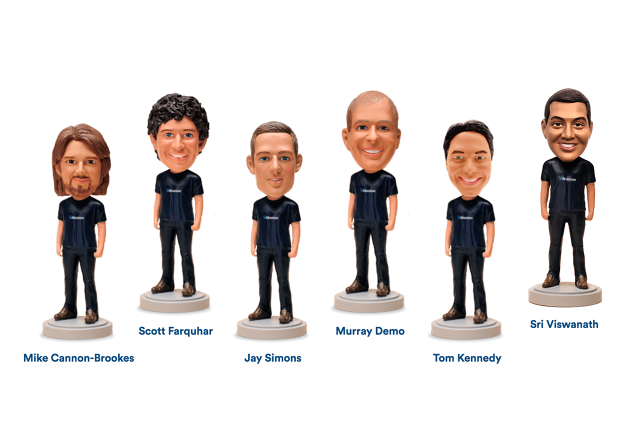
It’s hard to avoid comparing the maker of HipChat to its rival, Slack, whose founder, Stewart Butterfield, is a startup celebrity, lionized in the tech and business press. He’s also a natty dresser with a penchant for accessories like scarves and bowties. On Twitter, Butterfield has about 54,000 followers and a moody profile photo; Farquhar has about 9,000 followers and what looks like a quickie smartphone snap.
I ask Farquhar if the lack of buzz and celebrity status hurts Atlassian. “No, I don’t think so at all,” he says. “There’s always the flavor of the month that’s out there.” (And that was before Workplace by Facebook emerged.)
The casual approach has defined and benefitted Atlassian from its beginning. It took off by doing what now seems like common sense—advertising online, providing direct downloads and free trials, and giving some software away to small users (currently for HipChat and Bitbucket). “The enterprise software world [sales process] was still putting people on planes, and flying people around, and cold calling for lead generation,” says Farquhar of the industry back in 2002. Atlassian’s approach was instead modeled on consumer products and shareware.
“If you’re going to get 50,000 or 60,000, or 500,000 customers, you’re not going to win those customers through hand-to-hand combat,” says Simons, who joined Atlassian in 2008. He brags about how little the company spends on sales and marketing, which account for a “high teens” percent of revenue, versus other enterprise software makers like $51 billion behemoth Salesforce, which spends about half its budget on sales and marketing and is not yet profitable. (Skyscrapers are expensive.)
“I think Bitbucket’s doing a really smart thing for startups that maybe don’t have too many engineers,” says Krystal Flores, an engineer at Twine Data, which collects data from mobile apps for ad targeting. Her team moved its software repository from paid service GitHub to Bitbucket, which is free for teams of five or fewer. “The GitHub UI [user interface] is 10 times better,” she says, “but for free I’m not going to complain [about Bitbucket].” Twine Data doesn’t appear to be alone. Atlassian says that Bitbucket has had 13-fold growth since 2013, to over 5 million developers in 900,000 teams.
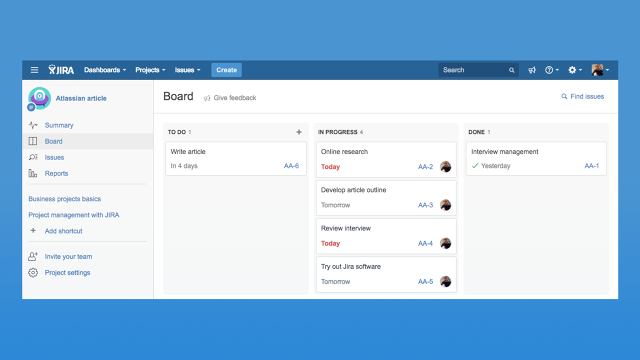
It Does The Job
Atlassian software users seem happy with less polish in exchange for more capabilities. Flores has used the Asana task-management software, which she finds better looking and easier to get started with than Jira. But her team prefers Jira for its advanced functions: she calls its time tracking for projects “10 times better than Asana.”
However, that requires grabbing a widget from the Atlassian Marketplace of over 3,000 apps. “A lot of the functions some teams might consider essential to their workflow are not included in the basic Jira product; they require add-ons,” reads one product review.
“At first glance, it’s very, very complicated,” says Flores. “An engineer really has to spend time looking into all the possibilities of Jira.” That’s a common point in user reviews. “There is a slight learning curve, and it does take a little time to set up and customize,” writes Tom Gerken, CTO of online marketplace Panjo, on software website GetApp. Nevertheless, he awards five of five stars.
I asked Simon Tower, a former sales engineer at Atlassian who left in 2015, if these critiques were common. “I would say yes, definitely. The setup experience has always been a pain point for them,” he says.
Regardless, nearly every review I read or conversation I had with a user of Jira software was very positive overall. They are forgiving, and Atlassian’s suite of apps is a selling point. Confluence is “nothing revolutionary, nor is it best-of-breed, but the fact that it integrates closely with Jira is very helpful,” says Adam Crossland, head of engineering at financial intelligence company EPFR Global.
Integration between apps might help HipChat as well. Slack doesn’t have project management software. Instead, it connects with apps like Asana, Kyber, Trello, and—yes—Jira. Atlassian offers everything from one company. Flores’s team uses Slack, but they don’t seem wedded to the app. “It’s just what we started using,” she says. “At some point, I think it would be nice to integrate [with HipChat].” HipChat also just added group videoconferencing in August—something Slack has promised but hasn’t yet delivered.
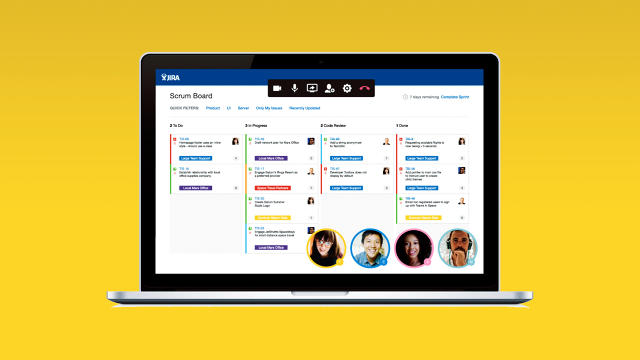
Simons points out that Atlassian spends a lot on R&D, which is in the “high thirties” percent of revenue. He calls Confluence a “distant relative of what it once was,” for instance. He and Farquhar acknowledge that they have to keep refreshing the products as their market grows.
They are betting on a lot of growth for collaboration software. Teams have to work more closely to deal with tighter production deadlines, more iteration on products, and expectations of 24/7 service, says Farquhar. “The fact that we’re moving toward a services economy has changed the way we work inside organizations,” he says, “and [is] really breaking down the silos in those organizations.”
In 2002, Farquhar and Cannon-Brookes foresaw a change in how companies buy and sell enterprise software, and it launched them on a slow but steady path to a multibillion-dollar business. Now they are betting that changes in how companies communicate, both among internal teams and with their customers, will bring billions more.
Fast Company , Read Full Story
(100)







